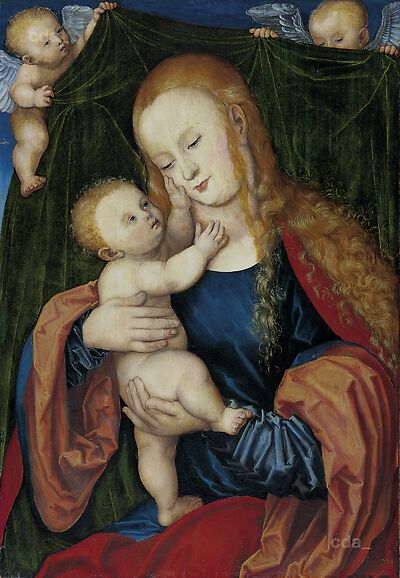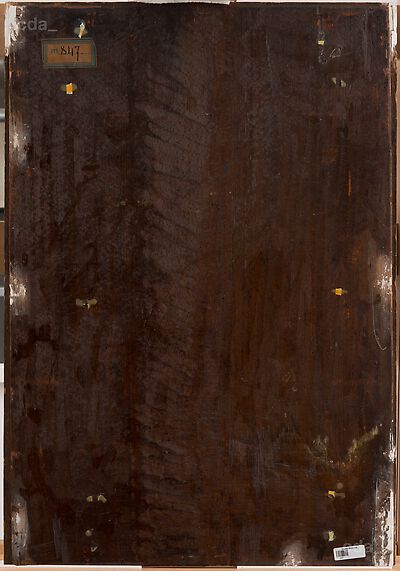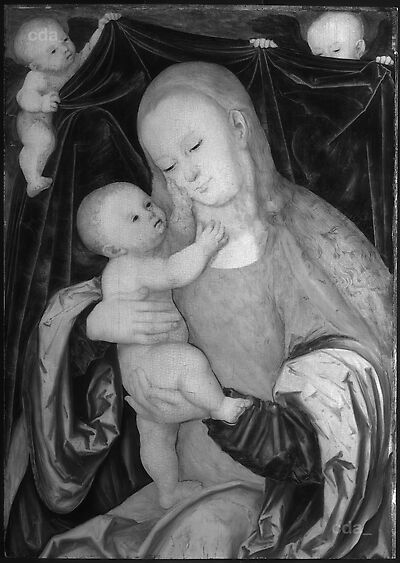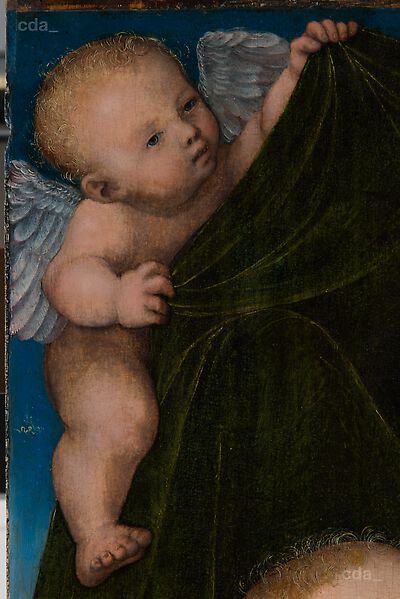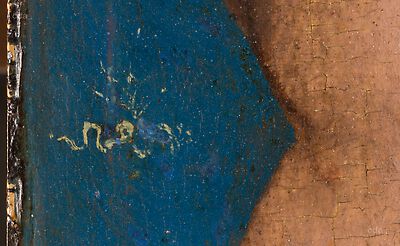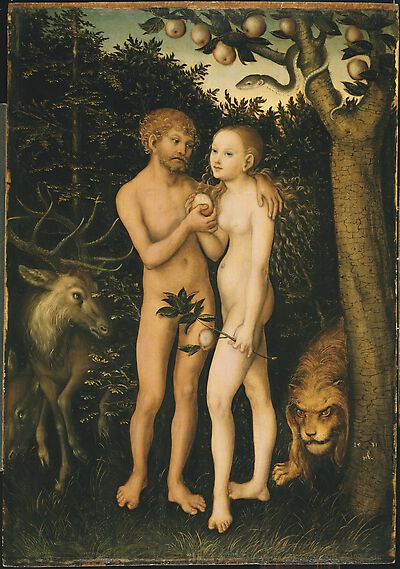Two putti hold up a mid-green curtain against a neutral blue backdrop and are themselves partially concealed by it. One of them is in the top left corner and pulls the cloth with his raised left hand almost to the top edge of the painting, while holding it at about
Two putti hold up a mid-green curtain against a neutral blue backdrop and are themselves partially concealed by it. One of them is in the top left corner and pulls the cloth with his raised left hand almost to the top edge of the painting, while holding it at about chest height with his right hand. The diagonal course of the stretched edge of the cloth between his hands leaves a triangle in the corner free, which is occupied by his head, torso and wings. In addition his right leg is visible in front of the curtain on the left edge of the painting; and his concealed left knee is visible through the curtain above Christ's head. The second putto in the top right corner is considerably more concealed. He grasps the curtain from behind, so that his fingers are only visible from the knuckles and pull the hem up to the tip of his nose. Only the top half of his head and his wings rise above the curtain. In front of the curtain the Mother of God with the Christ Child are depicted as a knee-length figurative group. The Virgin is sitting almost frontally, with a slight inclination of her body to the left: her left knee appears to have shifted into the frontal plane, her left leg is positioned at an angle to the left, whereas her right leg is stretched out. Her left elbow also projects forward, whereas her right hand is positioned further back. She has turned her head to the left as she is also inclined in this direction. As such she moves closer to the Christ Child supported by her left hand under his right thigh and protectively embraced with her right hand on the side exposed to the viewer. The child is completely naked and is shown almost in profile. He stands on his left leg on his mother's thigh; he supports his bent right leg on her left hand. Climbing he stretches his face up towards his mother, and touches her on the cheek with his hand, while feeling her neck with his open right hand. He gazes diagonally upwards into his mother's eyes; here the curiosity of the small child, which is mixed with tenderness, is given appropriate expression. The Virgin wears a vermilion red cloak over a simple blue smock. It covers her left shoulder and her knee, while the green lining acts as a foil behind her raised arm and the child on the left of the painting. The lining of the broad sleeves of the smock create a further colour accent, revealing a luminous orange-red colour. The Virgin's long blond hair falls in thick curls; except for a single strand which is combed behind her ear, it creates an expansive boarder along the Virgin's shoulder. The composition shows the artist's endeavours to break with the symmetrical layout dictated by the subject and to introduce movement and tension into the static group. A consequence of this is the contraposto of the two putti in the corners holding the curtain. Indeed the position of the Virgin who sits turned slightly to one side, the slight shift of the centre of activity to the left and the assymetrical distribution of the colours also serve this purpose. Despite a slight opening on the left, the unity of the group is emphasized by the arrangement of the draperies, the protective embrace of the Virgin and the position of the child. Although the asymmetry is striking in comparison with other depictions of the Virgin by Cranach - see the painting in Erfurt -, an additional missing second panel or portrait of a praying donor should not be considered here.
[Cat. Frankfurt 2005, 173-180]

